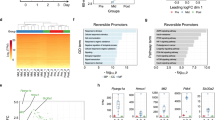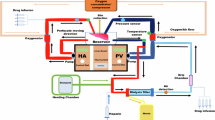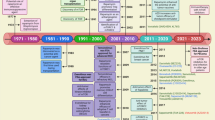Abstract
Torpor is a naturally occurring state of metabolic suppression that enables animals to adapt and survive extreme environmental conditions. Inspired by this adaptation, researchers have pursued synthetic torpor—an artificially induced, reversible hypometabolic state with transformative medical potential. Achieving synthetic torpor has been pursued for over a hundred years, with earlier work focused on identifying drugs for systemically suppressing metabolism. Breakthroughs in 2020 identified key torpor-regulating neurons in mice, opening new opportunities for neuromodulation-based metabolic control. Synthetic torpor has been applied in animal models for various medical applications, including ischaemic protection, organ preservation, radiation protection and lifespan extension. This Perspective examines the fundamental concepts of natural torpor, advances in approaches to induce synthetic torpor and medical applications of synthetic torpor. The capability of synthetic torpor to suppress whole-body metabolism has the potential to transform medicine by offering novel strategies for medical interventions.
This is a preview of subscription content, access via your institution
Access options
Access Nature and 54 other Nature Portfolio journals
Get Nature+, our best-value online-access subscription
$32.99 / 30 days
cancel any time
Subscribe to this journal
Receive 12 digital issues and online access to articles
$119.00 per year
only $9.92 per issue
Buy this article
- Purchase on SpringerLink
- Instant access to full article PDF
Prices may be subject to local taxes which are calculated during checkout



Similar content being viewed by others
References
Simpson, S. Temperature range in the monkey in ether anaesthesia. (Preliminary note.). Proc. Physiol. Soc. July 19, (1902).
Aronson, H. B., Duffield, J. R., Francis, B. G. & Ginsberg, H. Hibernation in anaesthesia–review of 100 non-European cases. South Afr. Med. J. 28, 823–827 (1954).
Swan, H., Jenkins, D. & Knox, K. Anti-metabolic extract from the brain of Protopterus aethiopicus. Nature 217, 671–671 (1968).
Dawe, A. R. & Spurrier, W. A. Hibernation induced in ground squirrels by blood transfusion. Science 163, 298–299 (1969).
Blackstone, E., Morrison, M. & Roth, M. B. H2S induces a suspended animation-like state in mice. Science 308, 518 (2005).
Ren, C. et al. Hypoxia, hibernation and neuroprotection: an experimental study in mice. Aging Dis. 9, 761–768 (2018).
Matsuo, T. et al. Thiazoline-related innate fear stimuli orchestrate hypothermia and anti-hypoxia via sensory TRPA1 activation. Nat. Commun. 12, 2074 (2021).
Zhang, J., Kaasik, K., Blackburn, M. R., Cheng & Lee, C. Constant darkness is a circadian metabolic signal in mammals. Nature 439, 340–343 (2006).
Dark, J., Miller, D. R. & Zucker, I. Reduced glucose availability induces torpor in Siberian hamsters. Am. J. Physiol. 267, R496–R501 (1994).
Zakharova, N. M. et al. A pharmacological composition for induction of a reversible torpor-like state and hypothermia in rats. Life Sci. 219, 190–198 (2019).
Ju, H. et al. Sustained torpidity following multi-dose administration of 3-iodothyronamine in mice. J. Cell. Physiol. 226, 853–858 (2011).
Oeltgen, P. R. et al. Hibernation ‘trigger’: opioid-like inhibitory action on brain function of the monkey. Pharmacol. Biochem. Behav. 17, 1271–1274 (1982).
Hrvatin, S. et al. Neurons that regulate mouse torpor. Nature 583, 115–121 (2020).
Zhang, Z. et al. Estrogen-sensitive medial preoptic area neurons coordinate torpor in mice. Nat. Commun. 11, 6378 (2020).
Takahashi, T. M. et al. A discrete neuronal circuit induces a hibernation-like state in rodents. Nature 583, 109–114 (2020).
Zhang, S. et al. Hypothermia evoked by stimulation of medial preoptic nucleus protects the brain in a mouse model of ischaemia. Nat. Commun. 13, 6890 (2022).
Yang, Y. et al. Induction of a torpor-like hypothermic and hypometabolic state in rodents by ultrasound. Nat. Metab. 5, 789–803 (2023).
Scott, K. A. et al. Mechanosensation of the heart and gut elicits hypometabolism and vigilance in mice. Nat. Metab. 7, 263–275 (2025).
Ma, W. X. et al. Adenosine and P1 receptors: key targets in the regulation of sleep, torpor, and hibernation. Front. Pharm. 14, 1098976 (2023).
Tøien, Ø. et al. Hibernation in black bears: independence of metabolic suppression from body temperature. Science 331, 906–909 (2011).
Cerri, M. et al. The inhibition of neurons in the central nervous pathways for thermoregulatory cold defense induces a suspended animation state in the rat. J. Neurosci. 33, 2984–2993 (2013).
Simpson, S. & Herring, P. T. The effect of cold narcosis on reflex action in warm-blooded animals. J. Physiol. 32, 305–311 (1905).
Cassidy, G. J., Dworkin, S. & Finney, W. H. Insulin and the mechanism of hibernation. Am. J. Physiol. 73, 417–428 (1925).
Dworkin, S. & Finney, W. H. Artificial hibernation in the woodchuck (Arctomys monax). Am. J. Physiol. 80, 75–81 (1927).
Burns, J. T. Regulation of Mammalian Hibernation. PhD thesis, Louisiana State University Historical Dissertations and Theses https://doi.org/10.31390/gradschool_disstheses.3097 (1977).
Suomalainen, P. & Herlevi, A. M. The alarm reaction and the hibernating gland. Science 114, 300 (1951).
Laborit, H. & Huguenard, P. Present technic of artificial hibernation. Presse Med. 60, 455–1456 (1952).
Shackman, R., Wood-Smith, F. G., Graber, I. G., Melrose, D. G. & Lynn, R. B. The lytic cocktail observations on surgical patients. Lancet 267, 617–620 (1954).
Agüero, O. Artificial hibernation (“lytic cocktail”) in the treatment of eclampsia. Am. J. Obstet. Gynecol. 73, 777–783 (1957).
Delaney, R. G., Lahiri, S. & Fishman, A. P. Aestivation of the African lungfish Protopterus aethiopicus: cardiovascular and respiratory functions. J. Exp. Biol. 61, 111–128 (1974).
Swan, H. & Schätte, C. Antimetabolic extract from the brain of the hibernating ground squirrel Citellus tridecemlineatus. Science 195, 84–85 (1977).
Bruce, D. S., Tuggy, M. L. & Pearson, P. J. Summer hibernation induced in ground squirrels (Citellus tridecemlineatus) by urine or plasma from hibernating bats (Myotis lucifugus or Eptesicus fuscus). Cryobiology 21, 371–374 (1984).
Bruce, D. S. et al. Opioids and hibernation. I. Effects of naloxone on bear HIT’S depression of guinea pig ileum contractility and on induction of summer hibernation in the ground squirrel. Life Sci. 41, 2107–2113 (1987).
Bruce, D. S. et al. Is the polar bear (Ursus maritimus) a hibernator? Continued studies on opioids and hibernation. Pharmacol. Biochem. Behav. 35, 705–711 (1990).
Diedrich, V., Kumstel, S. & Steinlechner, S. Spontaneous daily torpor and fasting-induced torpor in Djungarian hamsters are characterized by distinct patterns of metabolic rate. J. Comp. Physiol. B 185, 355–366 (2015).
Abbotts, B., Wang, L. C. H. & Glass, J. D. Absence of evidence for a hibernation “trigger” in blood dialyzate of Richardson’s ground squirrel. Cryobiology 16, 179–183 (1979).
Wang, L. C. H. et al. The “hibernation induction trigger”: specificity and validity of bioassay using the 13-lined ground squirrel. Cryobiology 25, 355–362 (1988).
Oeltgen, P. R., Nilekani, S. P., Nuchols, P. A., Spurrier, W. A. & Su, T. P. Further studies on opioids and hibernation: delta opioid receptor ligand selectively induced hibernation in summer-active ground squirrels. Life Sci. 43, 1565–1574 (1988).
Stein, A., Kraus, D. W., Doeller, J. E. & Bailey, S. M. Inhalation exposure model of hydrogen sulfide (H2S)-induced hypometabolism in the male Sprague-Dawley rat. Methods Enzymol. 555, 19–35 (2015).
Aslami, H., Schultz, M. J. & Juffermans, N. P. Potential applications of hydrogen sulfide-induced suspended animation. Curr. Med. Chem. 16, 1295–1303 (2009).
Satterly, S. A. et al. Hydrogen sulfide improves resuscitation via non-hibernatory mechanisms in a porcine shock model. J. Surg. Res. 199, 197–210 (2015).
Haouzi, P. et al. H2S induced hypometabolism in mice is missing in sedated sheep. Respir. Physiol. Neurobiol. 160, 109–115 (2008).
Zhao, Z., Van Oort, A., Tao, Z., O’Brien, W. G. & Lee, C. C. Metabolite profiling of 5′-AMP-induced hypometabolism. Metabolomics 10, 63–76 (2014).
Swoap, S. J., Rathvon, M. & Gutilla, M. AMP does not induce torpor. Am. J. Physiol. Regul. Integr. Comp. Physiol. 293, 468–473 (2007).
Strijkstra, A. M. et al. in Living in a Seasonal World: Thermoregulatory and Metabolic Adaptations (eds Arnold, W., Bieber, C., Millesi, E. & Ruf, T.) 351–362 (Springer, 2012).
Zhang, F. et al. When hypothermia meets hypotension and hyperglycemia: the diverse effects of adenosine 5′-monophosphate on cerebral ischemia in rats. J. Cereb. Blood Flow. Metab. 29, 1022–1034 (2009).
Zakharova, N. M., Tarahovsky, Y. S., Komelina, N. P., Fadeeva, I. S. & Kovtun, A. L. Long-term pharmacological torpor of rats with feedback-controlled drug administration. Life Sci. Space Res. 28, 18–21 (2021).
Sperry, M. M. et al. Identification of pharmacological inducers of a reversible hypometabolic state for whole organ preservation. eLife 13, RP93796 (2024).
Egawa, M., Yoshimatsu, H. & Bray, G. A. Neuropeptide Y suppresses sympathetic activity to interscapular brown adipose tissue in rats. Am. J. Physiol. 260, R328–R334 (1991).
Paul, M. J., Freeman, D. A., Jin, H. P. & Dark, J. Neuropeptide Y induces torpor-like hypothermia in Siberian hamsters. Brain Res. 1055, 83–92 (2005).
Tupone, D., Madden, C. J. & Morrison, S. F. Central activation of the A1 adenosine receptor (A1AR) induces a hypothermic, torpor-like state in the rat. J. Neurosci. 33, 14512–14525 (2013).
Shimaoka, H. et al. Induction of hibernation-like hypothermia by central activation of the A1 adenosine receptor in a non-hibernator, the rat. J. Physiol. Sci. 68, 425–430 (2018).
Hitrec, T. et al. Neural control of fasting-induced torpor in mice. Sci. Rep. 9, 15462 (2019).
Morrison, S. F., Cano, G., Hernan, S. L., Chiavetta, P. & Tupone, D. Inhibition of the hypothalamic ventromedial periventricular area activates a dynorphin pathway-dependent thermoregulatory inversion in rats. Curr. Biol. 35, 59–76 (2025).
Engström Ruud, L. et al. Activation of GFRAL+ neurons induces hypothermia and glucoregulatory responses associated with nausea and torpor. Cell Rep. 43, 113960 (2024).
Ambler, M., Hitrec, T., Wilson, A., Cerri, M. & Pickering, A. Neurons in the dorsomedial hypothalamus promote, prolong, and deepen torpor in the mouse. J. Neurosci. 42, 4267–4277 (2022).
Hare, M. T., Carter, M. E. & Swoap, S. J. Activation of oxytocinergic neurons enhances torpor in mice. J. Comp. Physiol. B 194, 95–104 (2024).
Jayne, L. et al. A torpor-like state in mice slows blood epigenetic aging and prolongs healthspan. Nat. Aging 5, 437–449 (2025).
Zhang, Z. et al. Primate preoptic neurons drive hypothermia and cold defense. Innovation 4, 100358 (2022).
Yamaguchi, H. et al. Dorsomedial and preoptic hypothalamic circuits control torpor. Curr. Biol. 33, 5381–5389 (2023).
Kim, T. et al. Effect of low intensity transcranial ultrasound stimulation on neuromodulation in animals and humans: an updated systematic review. Front. Neurosci. 15, 620863 (2021).
Beisteiner, R., Hallett, M. & Lozano, A. M. Ultrasound neuromodulation as a new brain therapy. Adv. Sci. 10, 2205634 (2023).
Borlongan, C. V., Hayashi, T., Oeltgen, P. R., Su, T. P. & Wang, Y. Hibernation-like state induced by an opioid peptide protects against experimental stroke. BMC Biol. 7, 31 (2009).
Iwata, M. et al. Delta opioid receptors stimulation with [d-Ala2, d-Leu5] enkephalin does not provide neuroprotection in the hippocampus in rats subjected to forebrain ischemia. Neurosci. Lett. 414, 242–246 (2007).
Elrod, J. W. et al. Hydrogen sulfide attenuates myocardial ischemia-reperfusion injury by preservation of mitochondrial function. Proc. Natl Acad. Sci. USA 104, 15560–15565 (2007).
Miao, Y. F. et al. 5′-adenosine monophosphate-induced hypothermia attenuates brain ischemia/reperfusion injury in a rat model by inhibiting the inflammatory response. Mediators Inflamm. 2015, 520745 (2015).
Bos, E. M. et al. Hydrogen sulfide-induced hypometabolism prevents renal ischemia/reperfusion injury. J. Am. Soc. Nephrol. 20, 1901–1905 (2009).
Kyo, S. et al. Quiescence-inducing neurons-induced hypometabolism ameliorates acute kidney injury in a mouse model mimicking cardiovascular surgery requiring circulatory arrest. JTCVS Open 12, 201–210 (2022).
Chien, S. et al. Two-day preservation of major organs with autoperfusion multiorgan preparation and hibernation induction trigger: a preliminary report. J. Thorac. Cardiovasc. Surg. 102, 224–234 (1991).
Cerri, M. et al. Hibernation for space travel: impact on radioprotection. Life Sci. Space Res. 11, 1–9 (2016).
Ghosh, S., Indracanti, N., Joshi, J., Ray, J. & Indraganti, P. K. Pharmacologically induced reversible hypometabolic state mitigates radiation induced lethality in mice. Sci. Rep. 7, 14900 (2017).
Puspitasari, A. et al. Synthetic torpor protects rats from exposure to accelerated heavy ions. Sci. Rep. 12, 16405 (2022).
Tinganelli, W. et al. Hibernation and radioprotection: gene expression in the liver and testicle of rats irradiated under synthetic torpor. Int. J. Mol. Sci. 20, 352 (2019).
Luppi, M. et al. Phosphorylation and dephosphorylation of tau protein during synthetic torpor. Front. Neuroanat. 13, 459026 (2019).
Squarcio, F. et al. Synthetic torpor triggers a regulated mechanism in the rat brain, favoring the reversibility of Tau protein hyperphosphorylation. Front. Physiol. 14, 1129278 (2023).
Golpich, M., Amini, E., Kefayat, A., Fesharaki, M. & Moshtaghian, J. In vitro and in vivo anti-cancer effects of hibernating common carp (Cyprinus carpio) plasma on metastatic triple-negative breast cancer. Sci. Rep. 12, 2855 (2022).
Daniels, I. S., OBrien, W. G., Nath, V., Zhao, Z. & Lee, C. C. AMP deaminase 3 deficiency enhanced 5′-AMP induction of hypometabolism. PLoS ONE 8, e75418 (2013).
Takahashi, T. M. et al. Optogenetic induction of hibernation-like state with modified human Opsin4 in mice. Cell Rep. Methods 2, 100336 (2022).
Acknowledgements
This work was supported by National Institutes of Health DP1DK143574 (to H.C.), R01NS128461 (to H.C.), JSPS Grant-in-Aid for Scientific Research (A) 24H00604 (to G.A.S.) and JSPS Grant-in-Aid for Transformative Research Areas (A) 23H04941 (to G.A.S.).
Author information
Authors and Affiliations
Contributions
H.C. and W.U. wrote the initial draft of the manuscript. G.A.S. revised the manuscript. All authors contributed to the content and organization of this Perspective; contributed to writing, editing and revising the manuscript; and approved the final version.
Corresponding author
Ethics declarations
Competing interests
The authors declare no competing interests.
Peer review
Peer review information
Nature Metabolism thanks Sinisa Hrvatin, Matteo Cerri and the other, anonymous, reviewer(s) for their contribution to the peer review of this work. Primary Handling Editor: Christoph Schmitt, in collaboration with the Nature Metabolism team.
Additional information
Publisher’s note Springer Nature remains neutral with regard to jurisdictional claims in published maps and institutional affiliations.
Rights and permissions
Springer Nature or its licensor (e.g. a society or other partner) holds exclusive rights to this article under a publishing agreement with the author(s) or other rightsholder(s); author self-archiving of the accepted manuscript version of this article is solely governed by the terms of such publishing agreement and applicable law.
About this article
Cite this article
Wu, W., Sunagawa, G.A. & Chen, H. Synthetic torpor: advancing metabolic regulation for medical innovations. Nat Metab 7, 1511–1523 (2025). https://doi.org/10.1038/s42255-025-01345-3
Received:
Accepted:
Published:
Issue date:
DOI: https://doi.org/10.1038/s42255-025-01345-3



